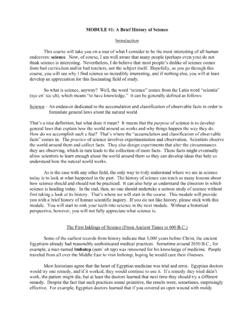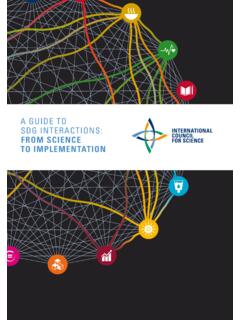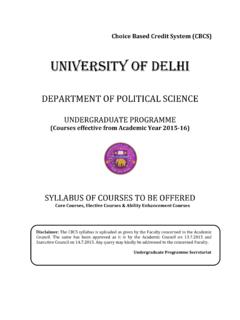Transcription of Kindergarten Science Lessons
1 Kindergarten Science Lessons Kindergarten TEACHER Science LESSON & RESOURCE GUIDE. Cache County School District 1. CONTENTS. CORE STANDARDS OF THE COURSE ..4. Lesson Collections ..7. S1O1 - A Drop in the Bucket - USU Water Cycle ..8. S1O1, S1O2, S1O3 - Build A Bug - Bugs Don't Bug Me .. 11. S1O1- Exploring Science Tools .. 14. S1O1, S1O2, S1O3 - If Bugs Could Talk - Bugs Don't Bug Me .. 16. S1O1, S1O2, S1O3 - Macroinvertebrate Graphing Activity - Bugs Don't Bug 20. S1O1, S1O2 - Macroinvertebrate Investigation - Bugs Don't Bug Me .. 23. S1O1- Macroinvertebrate Simon Says - Bugs Don't Bug Me.
2 26. S1O1- Non-Standard Measurement 28. S1O1, S1O2, S1O3 - Water Pollution Graphing - Bugs Don't Bug Me .. 30. S1O2, S1O3 - Macroinvertebrate Mix and Match - Bugs Don't Bug Me .. 34. S2O1- It Sort of Matters Where Things 37. S2O1, S4O2 - Sense of Taste, Hearing, Smell and 42. S1O2, S1O3 - The Incredible Journey - USU Water Cycle .. 45. S1O2 - Water Cycle Drama - USU Water Cycle .. 48. S1O2 - Water Cycle Relay Race - USU Water Cycle .. 50. S2O1, S2O2, S2O3, S4O2 - Spring nature Walk .. 53. S2O3 - Cultural Lit. 1: Identifying the Seasons.
3 55. S2O3 - Cultural Lit. 2: Identifying Weather 58. S2O3 - Dressing for the Season .. 60. S2O3 - Experiencing the Weather .. 63. S2O3 - Exploring the Seasons .. 70. S2O3, S4O2 - Five Senses and Four Seasons Quilt .. 77. S2O3, Forecasting Through Senses .. 80. S2O3 - I Can See and Feel the Change in the Seasons .. 85. S2O3 - : Favorite Season Circle Graph .. 88. S2O3 - : Claude Monet Seasonal Painting .. 91. S2O3 - : Outdoor Observation .. 94. S2O3 - : Four Seasons Class Mural .. 97. S2O3 - Seasons .. 99. S2O1, S2O2, S2O3, S4O2 - Spring nature Walk.
4 102. S2O3 - Staying Healthy Year 104. S2O3 - The Incredible Journey - USU Water Cycle .. 106. 2. S2O3 - Weather Walks .. 109. S3O1- Let's Get Moving .. 115. S3O2 - Everything Has Parts .. 118. S4O1- Cultural Lit. 3: Identifying Seasonal Animal Behaviors .. 123. S4O1, S4O2 - Hide & Seek Butterflies .. 125. S4O1- How Does a Penguin Stay Warm? .. 129. S4O1- : Animal Growth Journal .. 132. S4O1- K-Act. 26: Animal Research and Report .. 135. S4O1- K-Act. 27: Animal Track Mural .. 138. S4O1- Pets - Stuffed Animal 140. S1O1, S4O1- Washing Hands.
5 143. S4O2 - Animal Classification .. 146. S4O2 - Animal Coverings .. 148. S4O2 - Animal Movements .. 151. S4O2 - Ants .. 154. S4O2 - Bug Hunt .. 157. S4O2 - Camp Paws and Claws & Farm Animals .. 161. S4O2 - Can You Do It? I Can Do It! .. 165. S4O2 - Exploring Color and the Sense of Sight .. 168. S4O2 - I Can Sense That We are in for a Sense-Ational Experience .. 171. S4O2 - Let's Take Part in the Study of Animals .. 176. S4O2 - Picking Apart Plants .. 181. Science & STEM RESOURCES .. 184. 3. CORE STANDARDS OF THE COURSE. Standard 1. The Processes of Science , Communication of Science , and the nature of Science .
6 Students will be able to apply scientific processes, communicate scientific ideas effectively, and understand the nature of Science . Objective 1. Generating Evidence: Using the processes of scientific investigation ( framing questions, designing investigations, conducting investigations, collecting data, drawing conclusions). a. Framing questions: Observe using senses, create a hypothesis, and focus a question that can lead to an investigation. b. Designing investigations: Consider reasons that support ideas, identify ways to gather information that could test ideas, design fair tests, share designs with peers for input and refinement.
7 C. Conducting investigations: Observe, manipulate, measure, describe. d. Collecting data: Deciding what data to collect and how to organize, record, and manipulate the data. e. Drawing conclusions: Analyzing data, making conclusions connected to the data or the evidence gathered, identifying limitations or conclusions, identifying future questions to investigate. Objective 2. Communicating Science : Communicating effectively using Science language and reasoning a. Developing social interaction skills with peers. b. Sharing ideas with peers.
8 C. Connecting ideas with reasons (evidence). d. Using multiple methods of communicating reasons/evidence (verbal, charts, graphs). Objective 3. Knowing in Science : Understanding the nature of Science a. Ideas are supported by reasons. b. There are limits to ideas in Science ( what can be observed, measured, and verified). c. Differences in conclusions are best settled through additional observations and investigations. d. Communication of ideas in Science is important for helping to check the reasons for ideas. Standard 2. Earth and Space Science .
9 Students will gain an understanding of Earth and Space Science through the study of earth materials, celestial movement, and weather. Objective 1. Investigate non living things. Supplemental Materials (pdf). a. Observe and record that big rocks break down into small rocks, , boulders, rocks, pebbles, sand. 4. b. Demonstrate how water and wind move nonliving things. c. Sort, group, and classify Earth materials, , hard, smooth, rough, shiny, flat. Objective 2. Observe and describe changes in day and night. Supplemental Materials (pdf). a.
10 Compare and contrast light and dark in a day/night cycle and identify the changes as a pattern. b. Investigate, interpret, and explain to others that the sun provides heat and light to Earth. c. Examine what happens when you block the sun's light. Explore shadows and temperature changes. Objective 3. Compare changes in weather over time. Supplemental Materials (pdf). a. Observe and record that weather changes occur from day to day and weather patterns occur from season to season. b. Communicate ways weather can affect individuals. c. Describe, predict, and discuss daily weather conditions and how predicting the weather can improve our lives.




